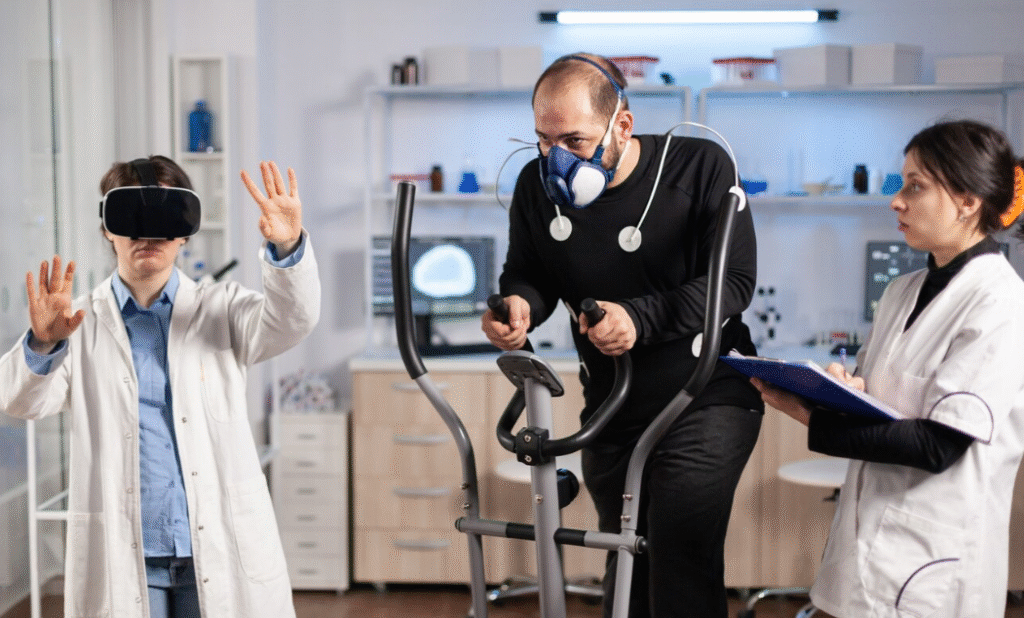The retail industry is undergoing a significant transformation, driven by advancements in robotics. From automated checkouts to delivery drones, robots are reshaping how retailers operate and how consumers interact with stores. As technology continues to evolve, robotics promises to revolutionize the retail experience, making it more efficient, personalized, and convenient.
What is Robotics in Retail?
Robotics in retail refers to the use of automated machines, robots, and AI-powered systems to perform tasks traditionally carried out by human employees. These tasks range from stocking shelves and assisting customers to processing transactions and delivering goods. Robotics is quickly becoming an integral part of the retail ecosystem, supporting both front-end and back-end operations.
Key Ways Robotics is Impacting Retail
1. Automated Checkout and Self-Scanning
Robotic systems are eliminating the need for human cashiers with advanced self-checkout machines and mobile apps that allow customers to scan and pay for items using their smartphones. Some stores are also experimenting with “just walk out” technology, where sensors automatically detect the products a customer takes and charge them without the need for any manual interaction.
- Example: Amazon Go uses a combination of sensors, cameras, and machine learning to allow customers to pick up items and leave without physically checking out.
2. Robotic Shelf Scanners and Inventory Management
In large stores, robots are being deployed to scan shelves and manage inventory. These robots use cameras and AI to detect out-of-stock items, misplaced products, and damaged goods. They provide real-time data to staff, enabling them to restock shelves or adjust inventory levels accordingly.
- Example: Walmart and other big-box retailers have implemented autonomous robots that roam the aisles, performing inventory checks to ensure stock levels are accurate and shelves are organized.
3. Customer Assistance and Service Robots
Robotic assistants, often equipped with voice recognition, are being used to guide customers to products, answer questions, and even provide personalized recommendations. These robots enhance the customer experience by offering instant help, reducing wait times, and improving store navigation.
- Example: SoftBank’s Pepper robot, used in retail environments, can interact with customers, provide product information, and even assist with store promotions.
4. Delivery Robots and Drones
Robots are not just helping in stores — they’re also transforming last-mile delivery. Delivery robots, whether on the ground or in the air, are able to transport goods to consumers quickly and efficiently, reducing delivery times and human labor costs. Some companies are experimenting with drone deliveries for small packages, while others use autonomous vehicles to handle larger shipments.
- Example: Starship Technologies offers autonomous robots that deliver food and groceries to customers’ doorsteps, while companies like Amazon are developing drone delivery systems.
5. Robotic Warehouses and Fulfillment Centers
Robots are improving efficiency in warehouses by automating product picking, sorting, and packing. These robots work alongside human employees, streamlining processes and reducing human error. This allows retailers to fulfill online orders faster and more accurately.
- Example: Amazon’s fulfillment centers use a fleet of robots to move goods across large warehouse spaces, allowing workers to focus on packing and shipping.
Benefits of Robotics in Retail
– Improved Efficiency
Robots can work around the clock, processing tasks faster and more accurately than humans. This boosts productivity, reduces errors, and speeds up the overall retail process.
– Enhanced Customer Experience
Robotic assistants and personalized services make the shopping experience more convenient and enjoyable. Whether it’s faster checkout or real-time inventory updates, customers benefit from a smoother experience.
– Cost Reduction
While the initial investment in robotics technology can be high, robots can significantly reduce operational costs in the long run by minimizing labor expenses, increasing operational efficiency, and reducing human error.
– Safer Work Environments
Robots can handle repetitive and physically demanding tasks, reducing the risk of injury for employees. This is especially useful in roles that involve heavy lifting, stock organization, or cleaning.
Challenges and Considerations
– High Initial Investment
The upfront cost of deploying robotic systems can be prohibitive, particularly for small and medium-sized retailers. However, the return on investment (ROI) tends to improve over time as robots reduce operational costs and increase efficiency.
– Job Displacement Concerns
While robotics can enhance productivity, there are concerns about job displacement. Retail workers may face challenges as automation takes over certain tasks, making retraining and upskilling essential for affected workers.
– Technical Challenges
Robotic systems need to be highly reliable and adaptable to handle the wide range of tasks in a retail environment. Ensuring that robots function smoothly and interact effectively with customers and employees requires continuous development and refinement of the technology.
The Future of Robotics in Retail
Looking ahead, robotics will continue to evolve and become even more integrated into retail environments. Advancements in AI, machine learning, and robotics will enable stores to offer even more personalized and seamless experiences, from AI-driven personal shoppers to fully automated stores that require no human involvement.
Additionally, the rise of omni-channel shopping experiences will drive further adoption of robotics, enabling retailers to provide consistent service across physical and digital platforms. As robotics technology improves and costs decrease, small and large retailers alike will find new ways to incorporate automation to enhance their operations and customer service.
Conclusion
Robotics is undoubtedly changing the future of the retail experience. By increasing efficiency, enhancing customer service, and reducing operational costs, robots are helping retailers adapt to the evolving needs of consumers. While challenges remain, the potential benefits make it clear that robotics will be a central element in the next generation of retail.


